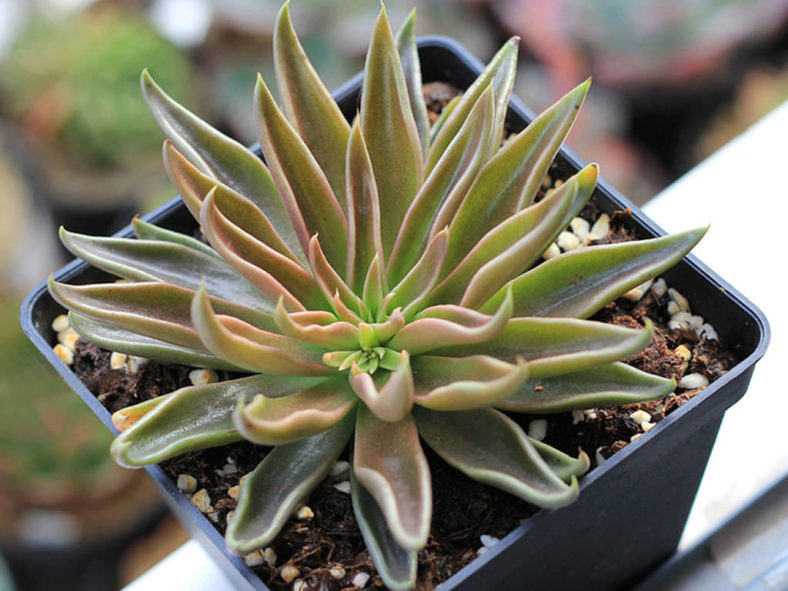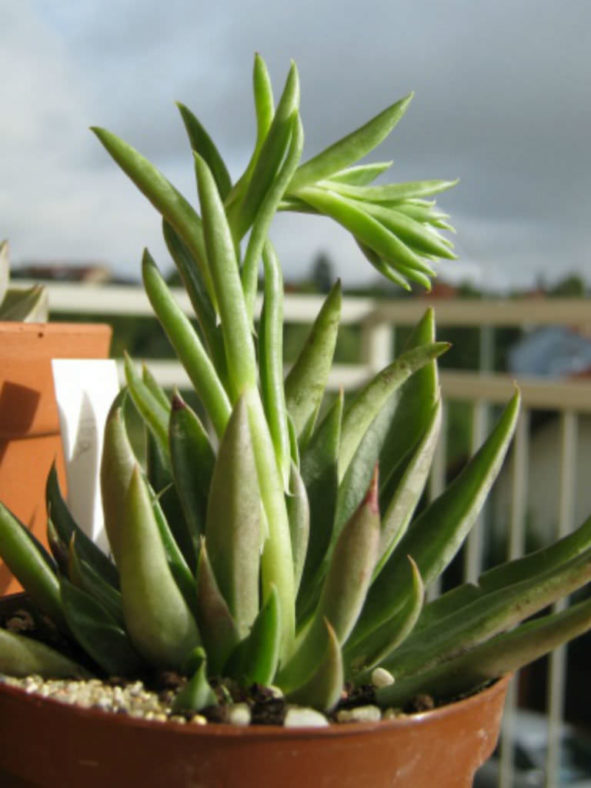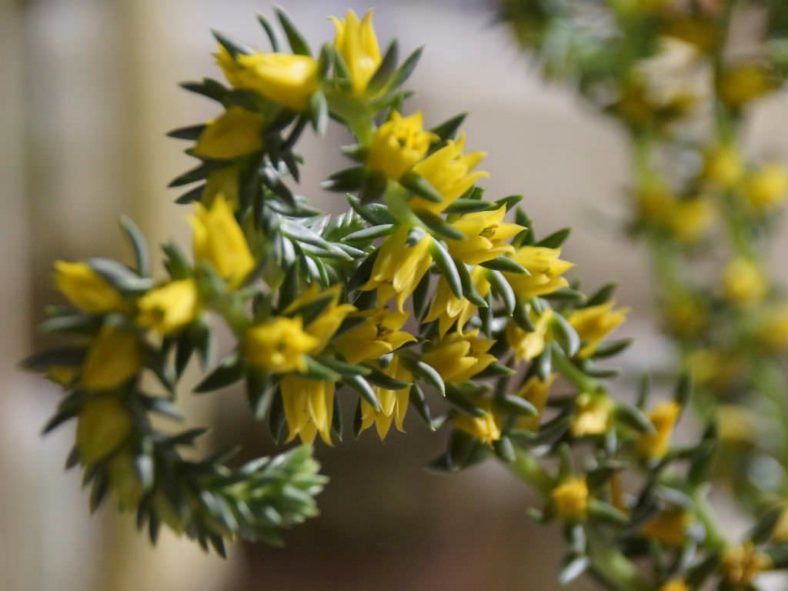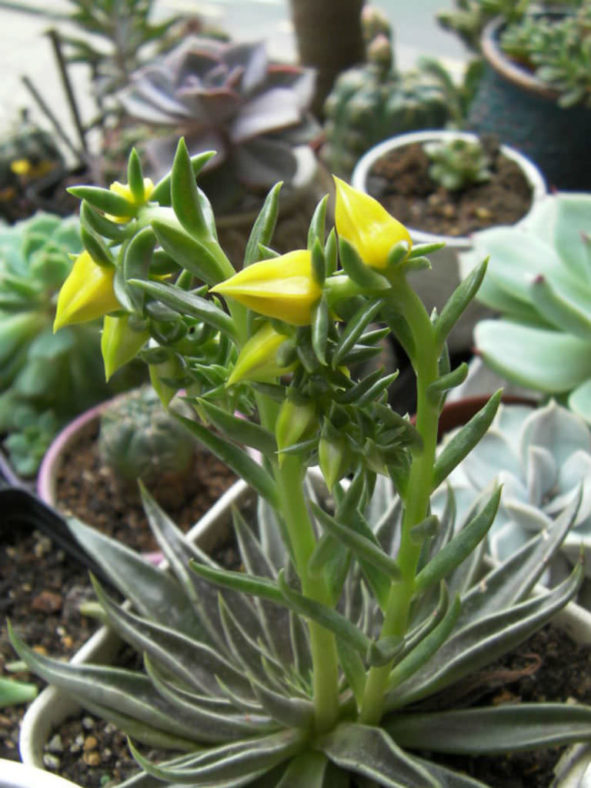Scientific Name
Echeveria lutea Rose
Common Name(s)
Yellow Echeveria
Scientific Classification
Family: Crassulaceae
Subfamily: Sempervivoideae
Tribe: Sedeae
Genus: Echeveria
Etymology
The specific epithet "lutea" (pronounced "LOO-tee-uh") means "saffron yellow, sallow" and refers to the color of the flowers of this species.
Origin
Echeveria lutea is native to Mexico.
Description
Echeveria lutea is a beautiful small succulent that typically forms a solitary rosette of narrow, reddish-purple leaves with upturned margins. The rosette can reach a diameter of up to 8 inches (20 cm). The upturned margins of the leaves create a deep trough shape, with the apical portion curving upwards like a horn. The vibrant coloration and upturned margins become most prominent when the plant is water-stressed or grown in full sun.
During the summer, unbranched inflorescences rise well above the foliage on a straight stalk that arches at the tip, causing the lemon-yellow flowers to point downwards. The flower stalk can grow up to 12 inches (30 cm) tall.

How to Grow and Care for Echeveria lutea
Hardiness: USDA hardiness zones 9b to 11b: from 25°F (-3.9°C) to 50°F (10°C).
Most common Echeveria species are not complicated succulents to grow, provided you follow a few basic rules. First, be careful never to let water sit in the rosette, as it can cause rot or fungal diseases that will kill the plant. Additionally, remove dead leaves from the bottom of the plant as it grows. These dead leaves provide a haven for pests, and Echeverias are susceptible to mealybugs. Finally, as with all succulents, maintaining careful watering habits and providing ample light will help ensure success.
Repot as needed, preferably during the warm season. To repot a succulent, ensure the soil is dry before repotting, then gently remove the pot. Knock away the old soil from the roots, removing any rotted or dead roots. Treat any cuts with a fungicide.
Most Echeverias can be easily propagated from leaf cuttings, although a few are better propagated from seeds or stem cuttings. To propagate a leaf cutting, place the individual leaf in potting soil for succulents and cover the dish until the new plant sprouts.
Learn more at How to Grow and Care for Echeveria.
Links
- Back to genus Echeveria
- Succupedia: Browse succulents by Scientific Name, Common Name, Genus, Family, USDA Hardiness Zone, Origin, or cacti by Genus
Photo Gallery
Click on a photo to see a larger version.


